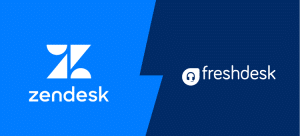In an era where technology shapes our everyday lives, cloud computing is a cornerstone of modern tech innovation. Among the giants in this field, Microsoft Azure has emerged as a leader, offering scalable and flexible cloud solutions. For the educational sector, Azure is not just a tool but a gateway to future-ready skills, equipping students with the knowledge they need in a tech-dominated world.
The Role of Cloud Computing in Education
The educational sector increasingly embraces cloud computing, with trends indicating a shift towards more virtualized learning environments. Schools and universities are leveraging cloud platforms for various purposes, from data storage and management to facilitating online learning and collaboration.
The trend towards cloud-based learning management systems (LMS) and student information systems (SIS) is particularly noteworthy. These systems allow more efficient coursework management, schedules, and student performance data.
Additionally, cloud computing enables educational institutions to offer a broader range of online courses, making education more accessible and flexible. For students struggling with complex coding assignments in these digital courses, the option to pay for programming assignments can provide essential support, ensuring academic success in an increasingly tech-driven education landscape.
Case Studies or Examples of Successful Cloud Computing Implementation
One notable example of successful cloud computing implementation in education is using Google Workspace (formerly G Suite for Education) in schools. This tool suite has revolutionized how teachers deliver content and collaborate with students.
Another example is the Massachusetts Institute of Technology (MIT), which uses cloud computing for a variety of purposes, including data analysis, extensive research projects, and providing a massive open online course (MOOC) platform.
These implementations demonstrate how cloud computing can support innovative educational methods, improve administrative efficiency, and enhance the learning experience.
How Cloud Computing is Shaping the Future of Education
Cloud computing is significantly influencing the future direction of education. It facilitates personalized learning experiences by enabling educators to tailor content and learning paths for individual students. Cloud technologies also support the growing trend of flipped classrooms and blended learning, where students access lectures online and engage in interactive classroom activities.
Furthermore, cloud computing paves the way for more sophisticated use of AI and machine learning in education, potentially transforming how educational content is created and consumed. The scalability and flexibility of cloud computing mean that education can be more dynamic and responsive to the needs of a global student population.
Overview of Azure: History, Development, and Key Features
Microsoft Azure, initially released as Windows Azure in 2010, represents Microsoft’s foray into the expanding world of cloud computing. Azure shifted from traditional on-premises servers to an expansive, flexible cloud environment.
Over the years, Azure has evolved, incorporating services from primary virtual machines and web app services to advanced analytics, AI, and machine learning capabilities.
A key feature of Azure is its hybrid cloud capabilities, allowing seamless integration between on-premises data centers and the cloud. This adaptability makes Azure a robust platform, catering to diverse computing needs.
This adaptability, complemented by the support of an efficient IT service desk, makes Azure a powerful platform, catering to diverse computing needs and ensuring reliable user support and troubleshooting.
Azure Services Relevant to Education
In the educational sphere, Azure offers specific services tailored to meet the dynamic requirements of learning environments. Azure Dev Tools for Teaching provides free access to Microsoft’s development tools, enabling students to learn the latest software development and testing technologies.
Another vital service is Azure Lab Services, which simplifies the setup and management of lab environments, allowing educators to create and provide lab environments for their students quickly. These tools offer resources and create an environment conducive to learning and innovation.
Benefits of Azure in an Educational Context
1. Scalability to Meet Educational Needs
One of the primary benefits of Azure in an educational setting is its scalability. Educational institutions experience fluctuating demands throughout the academic year, and Azure’s scalable nature allows them to adjust their resources as needed.
This flexibility is vital for efficiently managing workloads during peak times, such as exam seasons or project deadlines. It ensures institutions can provide sufficient computing resources for their students and faculty without significant hardware investments.
2. Flexibility in Education
Azure’s flexibility is a significant advantage for educational institutions. It supports a wide range of programming languages and frameworks, crucial in an educational context where various courses might require different technological stacks.
This flexibility allows educators to tailor their teaching tools and environments according to the specific requirements of their curriculum, ranging from introductory programming courses to advanced research projects in computer science, data science, and more.
3. Comprehensive Platform for Diverse Learning Opportunities
Lastly, the diverse range of tools and services Azure offers positions it as a comprehensive platform for learning and teaching. It provides resources for basic computing and data storage, which are fundamental in many IT courses.
Beyond these, Azure extends into more advanced areas such as artificial intelligence (AI) and data analytics. This breadth of tools and services allows educational institutions to offer a broad spectrum of IT skills, catering to students at different levels of their educational journey.
By providing access to cutting-edge technologies and platforms, Azure ensures students learn skills relevant to the modern digital workplace.
Azure for Education: Key Components
1. Azure Dev Tools for Teaching: Accessing Development Resources
A key aspect of Azure for Education is the Azure Dev Tools for Teaching. This service provides access to Microsoft’s vast array of development and testing software specifically for educational purposes.
It’s a resource that significantly benefits students and educators in computer science and related fields. Through this offering, students can access the latest Microsoft software, tools, and platforms, enabling them to work on real-world projects and develop highly sought-after skills in the tech industry.
2. Azure Lab Services: Creating Managed Lab Environments
Azure Lab Services is another integral component, focusing on practical learning experiences. This service offers managed lab environments crucial for hands-on learning in various IT and computer science disciplines.
Educators can set up lab environments quickly and efficiently without worrying about the underlying infrastructure. This aspect of Azure for Education allows students to focus on learning and experimentation in a controlled, real-world environment, enhancing their practical skills.
3. AI and Machine Learning Services for Aspiring Technologists
Azure provides comprehensive AI and Machine Learning services for students and educators focusing on AI and data science. These services offer hands-on experience with the most advanced technologies available today.
Using Azure’s AI and Machine Learning tools, students can work on complex algorithms, develop predictive models, and gain practical experience that will be invaluable in their future careers.
4. Azure Notebooks and Cognitive Services: Experimenting with AI and Data Science
Additionally, Azure for Education includes services like Azure Notebooks and Azure Cognitive Services, which are especially beneficial for students interested in data science and AI.
Azure Notebooks facilitate an easy-to-use coding and data analysis platform, allowing students to experiment and learn without needing extensive personal infrastructure.
On the other hand, Azure Cognitive Services offers APIs for AI capabilities like vision, language, and decision-making, enabling students to integrate advanced AI functions into their projects. This access democratizes the learning process, allowing students of all levels to engage with cutting-edge technology meaningfully.
Integration into Curriculum and Teaching
Integrating Azure’s tools into curriculum and teaching is a transformative approach to education. Azure Dev Tools can teach coding and app development, allowing students to work on real-life projects and applications.
Azure Lab Services facilitate the setting up of virtual labs for various subjects, enabling practical, hands-on experience in a controlled environment. Azure Notebooks can be used for data science courses to teach data analysis and machine learning concepts.
This integration enhances the learning experience and prepares students for the technological demands of the future workforce.
Azure's Security and Compliance Features
In education, the security and protection of student data are paramount. Azure addresses this with robust security and compliance features. It adheres to global compliance standards, ensuring that data stored on its servers is protected under stringent privacy laws.
Azure offers tools like Azure Security Center and Azure Active Directory, which help institutions manage and secure user access and identity.
Additionally, features like data encryption, both at rest and in transit, and regular security updates provide a secure environment for educational institutions to manage their data and resources, safeguarding against data breaches and unauthorized access.
Empowering Students with Azure
1. Skills Students Can Learn Using Azure
Azure opens up a vast landscape of learning opportunities for students. It enables them to gain hands-on experience in cutting-edge areas like data analysis, machine learning, and application development.
Through Azure, students can learn to analyze large datasets, develop and deploy web and mobile applications, and explore the realms of artificial intelligence and IoT (Internet of Things).
These skills are not just academic; they are highly practical, directly applicable to real-world scenarios, and foster a deep understanding of modern technology infrastructures.
2. Importance of Cloud Computing Skills in the Current Job Market
In today’s digital era, cloud computing skills have become essential. The job market increasingly favors candidates with a strong foundation in cloud technologies.
Skills in managing and developing cloud-based solutions are in high demand across industries, not just in tech companies but also in healthcare, finance, retail, and more. As one of the leading cloud platforms, Azure provides students with relevant, marketable skills.
Proficiency in Azure and cloud computing enhances employability, opening up various career opportunities in multiple sectors.
3. Student Success Stories or Case Studies of Projects Built Using Azure
Numerous inspiring success stories of students leveraging Azure to build remarkable projects. For instance, a group of students at a university used Azure Machine Learning to develop a predictive model for identifying at-risk students, helping to improve educational outcomes.
Another case involved students creating a cloud-based mobile app using Azure services, which won a national technology competition. These examples demonstrate how Azure not only equips students with technical skills but empowers them to innovate and solve real-world problems, showcasing the practical application and impact of their learning.
Teaching Methodologies Using Azure
Innovative Teaching Approaches Using Azure
Azure facilitates a range of innovative teaching methodologies that transform traditional classroom dynamics. One such approach is project-based learning, where students use Azure services to work on real-life projects, applying their theoretical knowledge to practical scenarios.
This method enhances problem-solving and critical-thinking skills. Additionally, Azure supports flipped classroom models, where students first learn course material online, often through Azure-hosted content, and then engage in interactive, hands-on activities in class.
These approaches foster a more engaging, student-centered learning environment, encouraging active participation and deeper understanding.
Training Educators to Use Azure in Their Teaching Effectively
Training educators in its practical use is essential to maximize the benefits of Azure in education. Microsoft offers various resources and training programs to help educators become proficient in Azure. These include online courses, webinars, and certification programs focused on Azure’s applications in teaching and research.
By empowering educators with the knowledge and skills to use Azure, they can more effectively integrate cloud technology into their curriculum, enhancing the quality and relevance of their teaching and better-preparing students for a tech-centric world.
Collaborations and Partnerships with Microsoft for Educational Institutions
Microsoft actively fosters collaborations and partnerships with educational institutions to promote using Azure in education. These partnerships often involve access to Azure and its various educational tools at reduced or no cost, providing a significant resource for institutions.
Microsoft also collaborates with schools and universities in research projects and technology initiatives, leveraging Azure’s capabilities. These collaborations offer valuable resources and support for educational institutions and open up opportunities for innovation and development in the educational sector, furthering technology integration in education.
Real-World Examples of Educational Institutions Utilizing Azure
Educational institutions increasingly use Microsoft Azure to elevate their teaching and learning experiences. Azure’s cloud computing capabilities offer many benefits, from enhancing curriculum delivery to streamlining administrative processes.
Azure is pivotal in delivering the University of Washington’s comprehensive cloud computing curriculum. This integration allows students to gain hands-on experience with cloud technologies, working on projects and research that involve real-world cloud-based applications.
This practical approach prepares students for careers in cloud computing and related fields and enhances their understanding of complex concepts through active engagement.
Arizona State University’s collaboration with Microsoft Azure highlights another aspect of Azure’s potential in education. The university can analyze academic data more efficiently using Azure’s advanced analytics capabilities. This analysis aids in identifying patterns and trends that can inform decisions about curriculum design, student support services, and resource allocation.
By focusing on data-driven insights, Arizona State University aims to improve student success rates and create more personalized learning pathways for its students.
Beyond these examples, other educational institutions leverage Azure to create virtual lab environments, host online learning platforms, and securely manage vast amounts of educational data. Azure’s scalability means that schools and universities can adjust their cloud services based on changing needs, such as increasing online learners or expanding research projects requiring more computing power.
The security features of Azure also play a crucial role, especially when dealing with sensitive student information and research data. Azure’s robust security protocols protect data, providing peace of mind for institutions and their users.
Impact on Student Learning Outcomes and Skill Development
Implementing Azure in these educational settings has significantly impacted student learning outcomes and skill development. At the University of Washington, students gain practical experience in cloud computing, preparing them for careers in a cloud-centric world.
Similarly, at Arizona State University, using Azure in analyzing educational data has improved learning experiences and outcomes, as insights from the data help tailor teaching methods to student needs. Such impacts underscore Azure’s efficacy in providing technical skills and enhancing overall educational quality and effectiveness.
Lessons Learned and Best Practices
From these case studies, several lessons and best practices emerge. One key lesson is aligning Azure-based projects and tools with curriculum objectives to maximize learning impact.
Additionally, continuous training and support for educators in using Azure are crucial for successful implementation. It’s also evident that collaboration between educational institutions and Microsoft can lead to innovative solutions and improvements in educational systems.
These best practices highlight the need for a strategic approach in integrating Azure into educational contexts, ensuring its deployment is practical and conducive to the institution’s and students’ needs.
Potential Challenges in Implementing Azure in Education
The implementation of Azure in educational settings has its challenges. Firstly, the cost is a significant factor; while Azure offers academic discounts, the total expense for comprehensive usage can be substantial, especially for smaller institutions.
Training represents another challenge; educators must be adequately trained to use Azure effectively, which requires time and resources.
Additionally, infrastructure readiness is crucial. Institutions must have the IT infrastructure to support Azure, which can be a hurdle, particularly in less technologically developed areas.
Addressing Concerns about Cloud Computing in Education
Concerns around security, privacy, and accessibility are paramount regarding cloud computing in education. Security and privacy concerns stem from handling sensitive student and institutional data on cloud platforms. Azure addresses these issues by offering robust security measures, but institutions must also play their part by implementing proper data governance and compliance practices.
Accessibility is another critical concern, as students and educators require reliable internet access to utilize cloud services fully. Institutions need to ensure that Azure’s resources are accessible to all, including those who may have limited access to technology or internet services.
Addressing these concerns requires a collaborative effort between cloud service providers, educational institutions, and policymakers to create a secure, private, and accessible digital learning environment.
Emerging Trends in Cloud Computing and How Azure is Adapting
As cloud computing continues to evolve, Azure is at the forefront, adapting to emerging trends such as the increased use of artificial intelligence (AI) and machine learning (ML) in education. Azure is integrating these technologies to offer advanced analytics, personalized learning experiences, and intelligent automation within educational platforms.
Another trend is the growing emphasis on hybrid cloud environments, which Azure supports through its flexible architecture. This adaptability allows educational institutions to balance on-premises and cloud-based resources, catering to diverse educational needs and infrastructure capabilities.
Future Developments in Azure’s Educational Offerings
Looking ahead, Azure is poised to expand its educational offerings, focusing on more tailored and interactive learning tools. This expansion may include more sophisticated AI-driven analytics for personalized learning and enhanced virtual and augmented reality (VR/AR) tools to create immersive learning experiences.
Azure will also strengthen its collaborative tools, making remote and hybrid learning more seamless and engaging. Additionally, Azure may offer more specialized services and tools for research-intensive institutions, facilitating advanced research in various academic fields using cloud computing resources.
Predictions for the Future Role of Cloud Computing in Education
The future role of cloud computing in education is set to be transformative. Cloud platforms like Azure will likely become integral to the educational infrastructure pivotal in curriculum delivery, administration, and collaboration. The continued integration of cloud computing is expected to make education more accessible and inclusive, breaking down geographical and socio-economic barriers to learning.
Cloud computing will also drive innovation in education, enabling new teaching methodologies and learning models, such as global virtual classrooms and AI-assisted personalized learning paths. With Azure at its helm, cloud computing is set to reshape the educational landscape, making it more dynamic, accessible, and aligned with the evolving digital world.
Wrapping Up
In conclusion, Microsoft Azure for Education is a transformative force in academic technology. Its introduction into various educational settings worldwide has not only enhanced the infrastructure and offerings of these institutions but has also reshaped the way educators and students interact with technology.
The University of Washington and Arizona State University are prime examples of how Azure’s cloud computing capabilities can revolutionize learning experiences, from providing comprehensive curricula to enabling data-driven approaches to student success.
The flexibility, scalability, and comprehensive range of tools offered by Azure cater to the diverse needs of the educational sector. Whether it’s through facilitating hands-on learning in cloud computing, developing advanced AI and machine learning skills, or improving administrative efficiency, Azure is an invaluable asset in education.
Its role in supporting innovative teaching methodologies, ensuring data security, and adapting to emerging trends in cloud computing highlights its potential to elevate educational standards and practices further.
As we look towards the future, Azure’s continued evolution and adaptation to the changing landscape of technology and education are poised to offer even more opportunities for enhancing learning experiences. With Azure at the forefront, integrating cloud computing in education promises a future where education is more accessible, dynamic, and closely aligned with the digital world.
This shift prepares students for the technological demands of the future workforce and opens up new avenues for innovation and exploration in education. Azure for Education, therefore, represents not just a tool or platform but a gateway to a future where technology and learning go hand in hand, creating a more informed, skilled, and technologically adept global student body.







